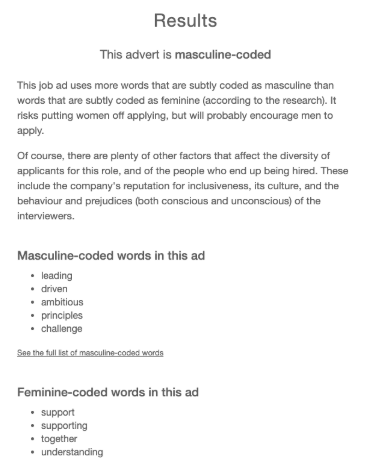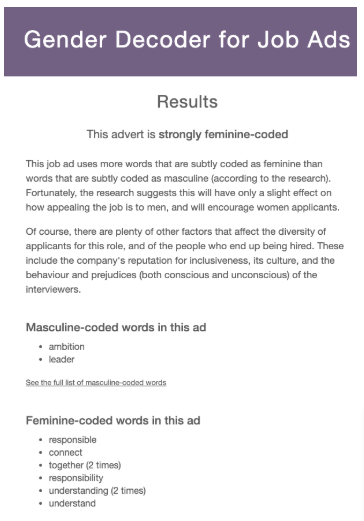How to find the right (wo)man for the job!
Create diversity and inclusion by using the right words in your job descriptions.
Your job has been online for a while and you start to receive applications in your mailbox. But what do you notice? They are all male applicants. Coincidence? We don’t think so. Did you know that you (unknowingly) can gender code your job descriptions by using words that can be steering or more appealing to a certain gender? Now is the time to start optimising your content as this blog is a “gender coded wake up call” to help you write successful job descriptions that are appealing to your target audience, regardless of gender!
I’ll take your word for it!

According to LinkedIn’s research “Language Matters Gender Diversity Report” the words you use matter! And they can have a big impact on your recruitment results and diversity on the work floor.
For example if you use the word “aggressive” in your job description, you would discourage 44% (female) and 33% (male) candidates from applying (see image). On the other hand, words like “powerful”, ‘strong-willed’ and “confident” make your vacancy text a lot more attractive ( for both male and female candidates)!
So what’s the deal on this? Let’s get the word out
All your recruitment efforts are aimed at finding the right candidate who is the best fit with your organisation, team and role, regardless of their gender. This is why you should choose your words carefully. Not just in your job descriptions, but throughout the whole candidate journey!
Does this mean you can’t use certain words at all anymore? No, of course not. But while writing your vacancy text, it is important not only to make sure the role and your organisation are well described, but also to keep in mind certain words might be more appealing (or off-putting) for different people. Be extra careful when you are handed a pre-written text by your hiring manager!
So which words should you keep an eye on? Luckily another research on gender wording in job advertisements was able to create a list with some “male and female coded” words. To make it extra easy, a tool was developed where you can copy your job text or content to check on gender coding. This tool is based on the list of “male and female coded” words from this research. It helps you double check if you (unknowingly) steered towards specific gender coded words and to make sure your choice of words doesn’t make you miss out on any potential candidates!
No words but deeds, this is how we do it at VONQ
Are VONQ’s job texts gender diverse, unbiased and does it reflect who we (with English as the main language) are as a potential employer? Let’s find out!
If we input our DevOps Engineer job description, the tool tells us we use “male” and “female” coded words in the job text. But our writing style is actually not equally balanced as we use a bit more “male coded” writing style (see image). We see similar results with a bit more “male coded” writing style when we apply our jobs International Marketing and Campaign Manager, Product Owner Internal Systems and Senior Frontend Developer.


Our job International Business Development Manager is actually one of few that has a more “female coded” writing style (see image).
Should we worry and go back to the writing board? Actually, no. Because we have a female colleague who has taken the role of International Marketing and Campaign Manager upon her. But didn’t we write that job with more “male coded” words? We did! We like to believe that we succeeded in describing our organisation as best and realistic as possible as we regularly use words like “ambition”, “autonomous” and “challenges” which are mainly “male coded” words. We find these values and qualities very important and we retrieve them in our colleagues, regardless of their gender!
Have a look at how one of our colleagues Suzanne describes her job, VONQ and what appeals to her. Recognise the words “ambition” and “challenges” in her quote? Yep, these are “male coded”!

Make every word count!
If your job descriptions are slightly more “male coded” than “female coded” or the other way around, there is no direct need for panic or fear of missing out on potential candidates. When writing your (vacancy) content, it’s important to keep in mind that your writing style matches with your employer brand and is appealing to your ideal candidate without losing diversity out of sight.
Now is the perfect time to optimise your content! Find your ideal candidate by choosing the right words, but also by naming the right pull factors, an appealing offer and using the right tone of voice. Learn more on these topics on our Insights page.